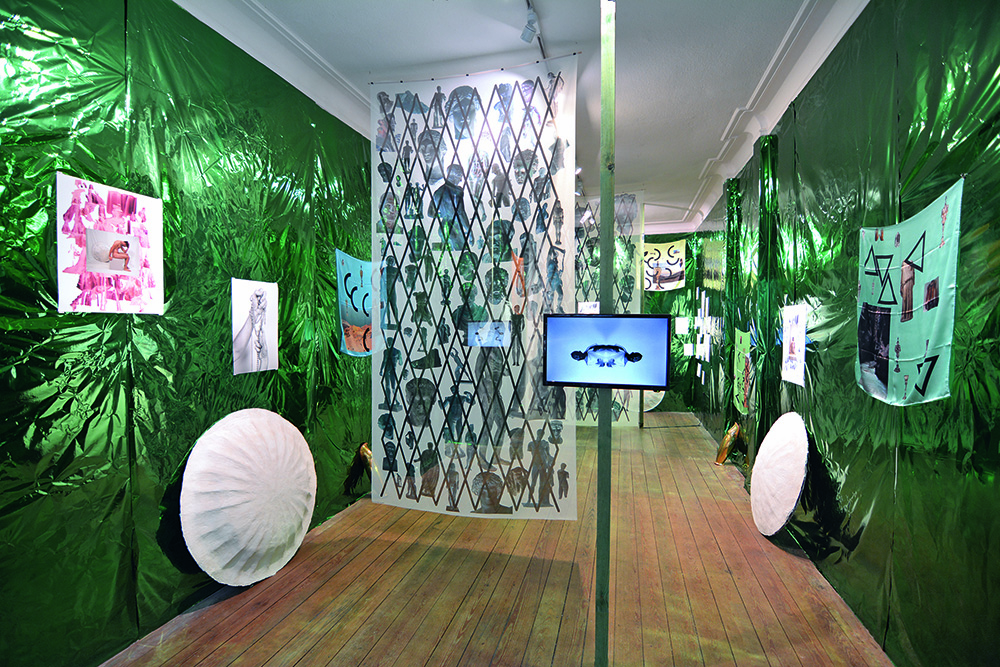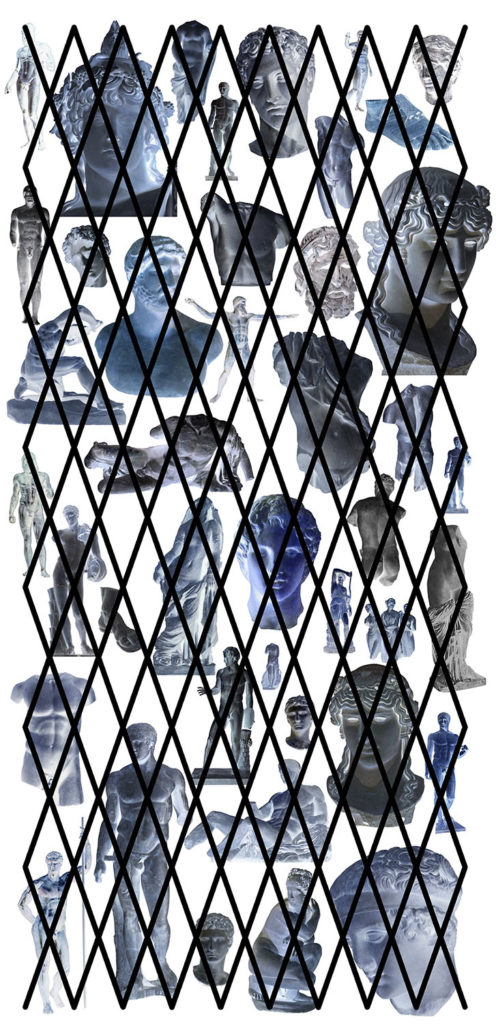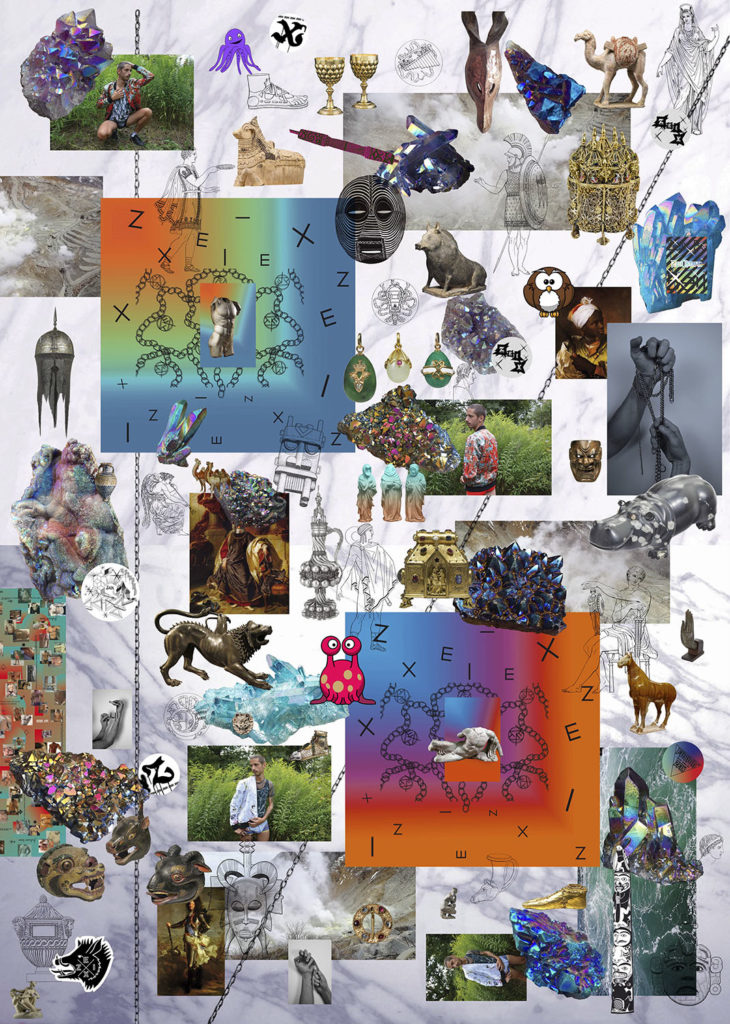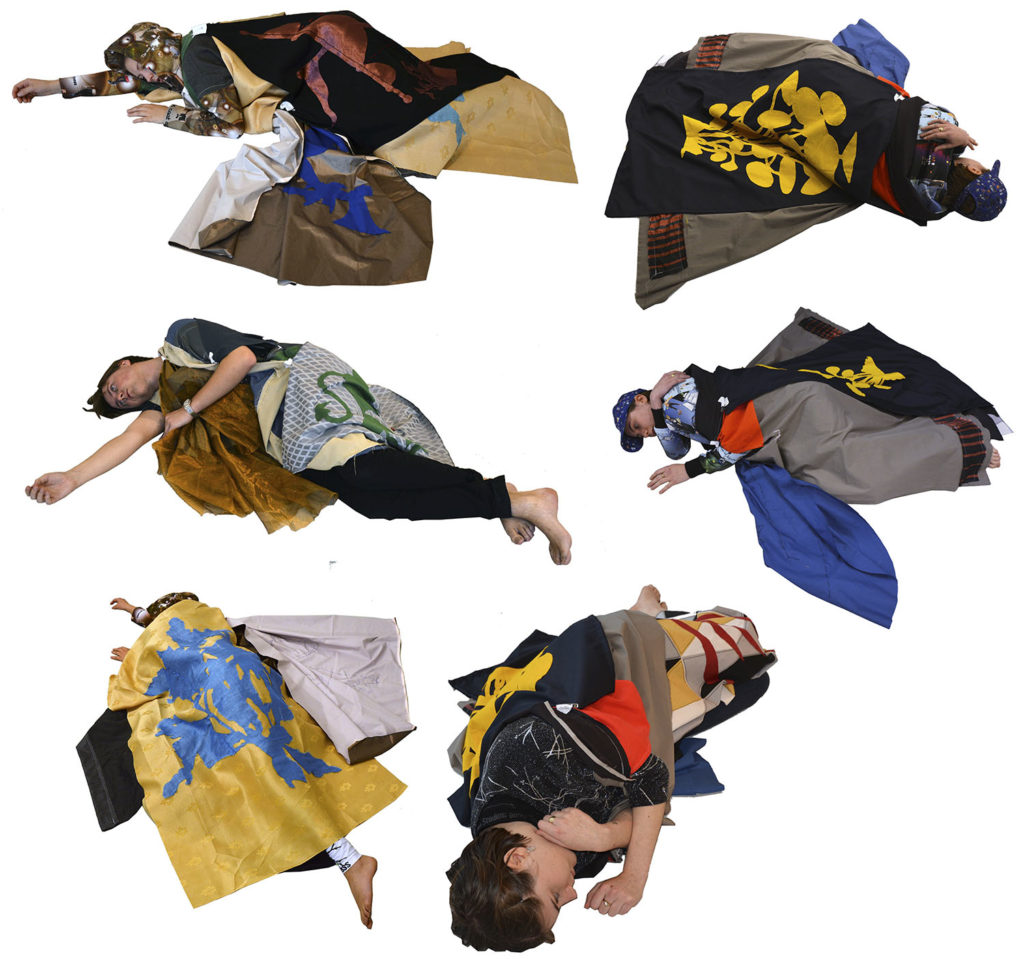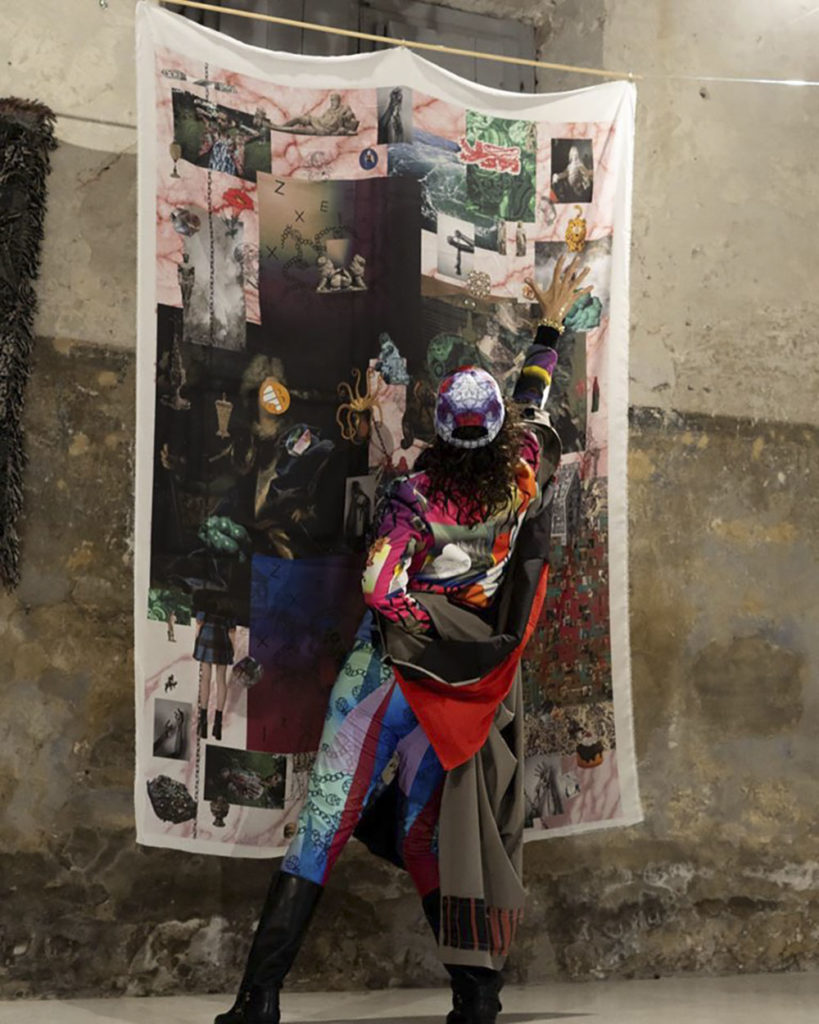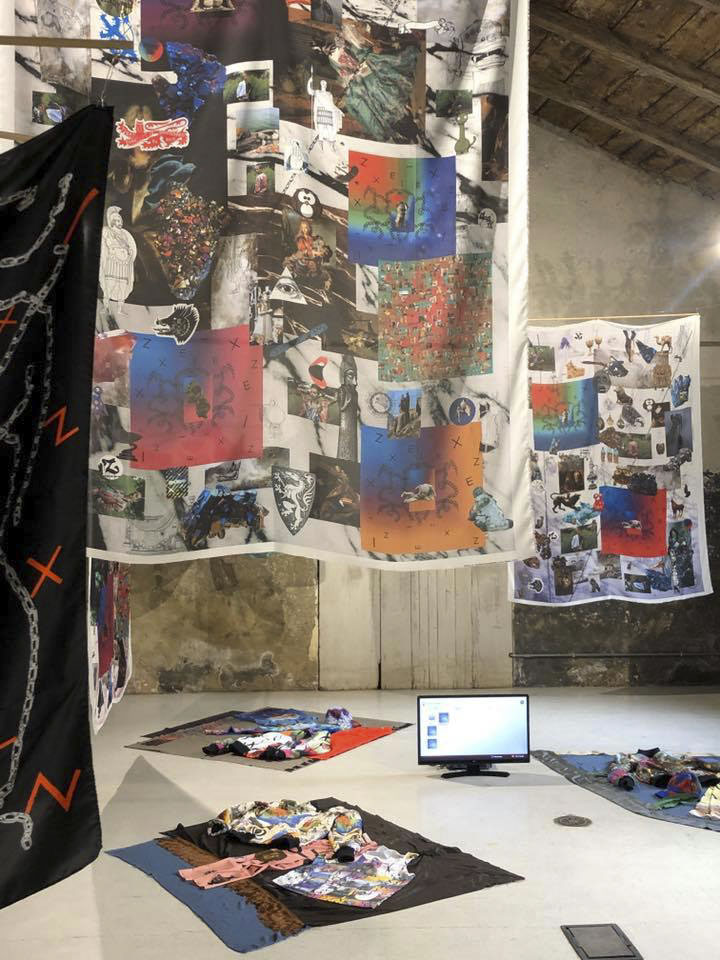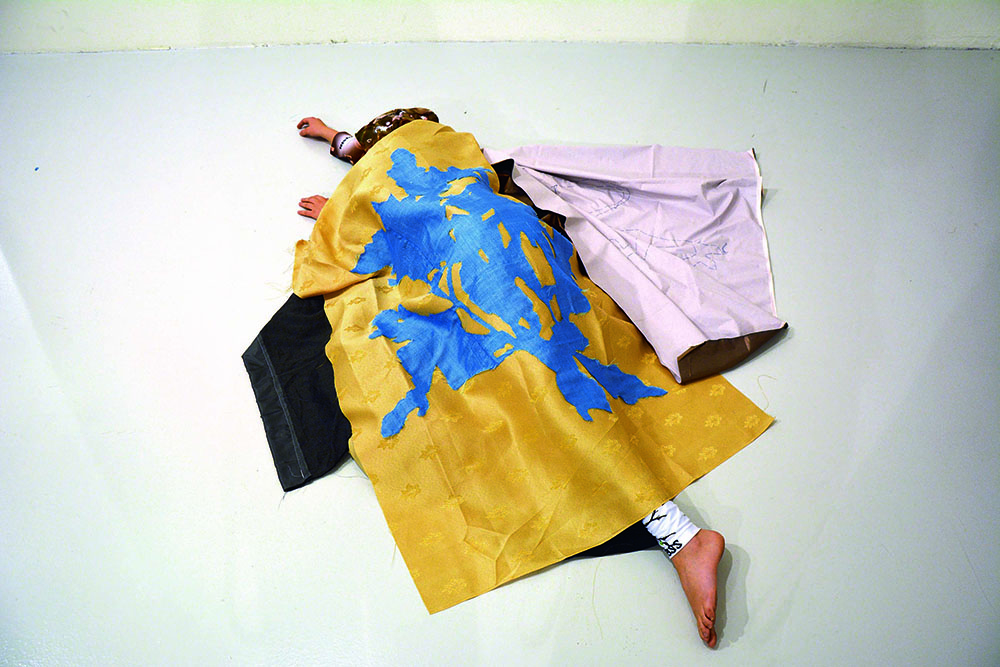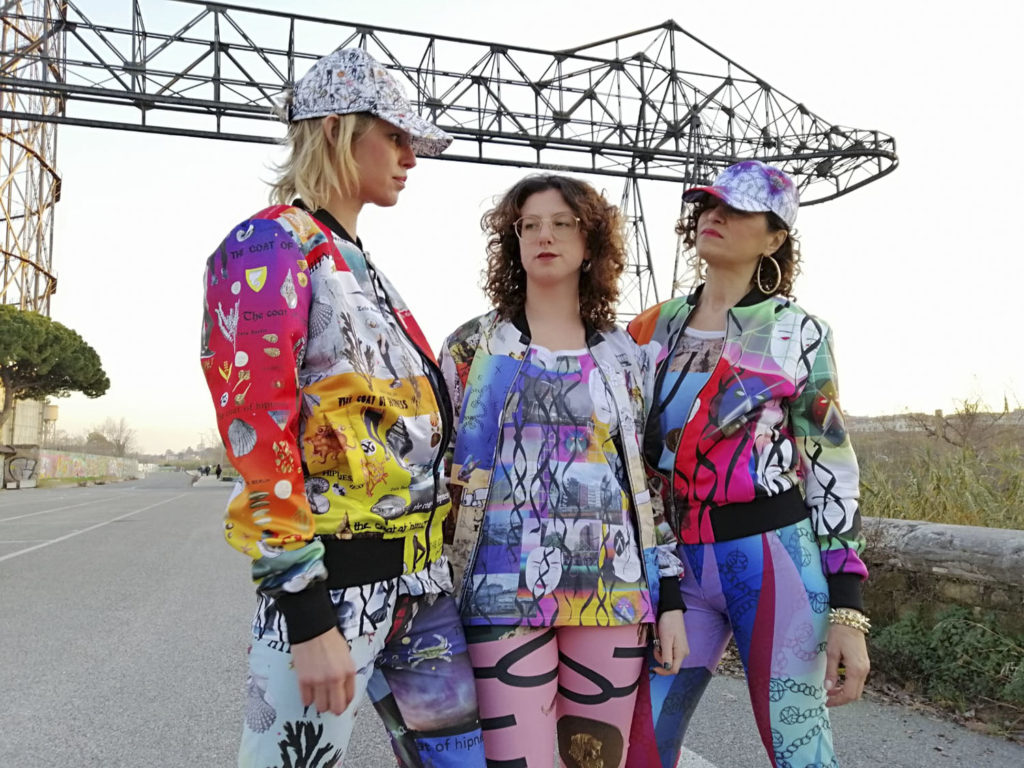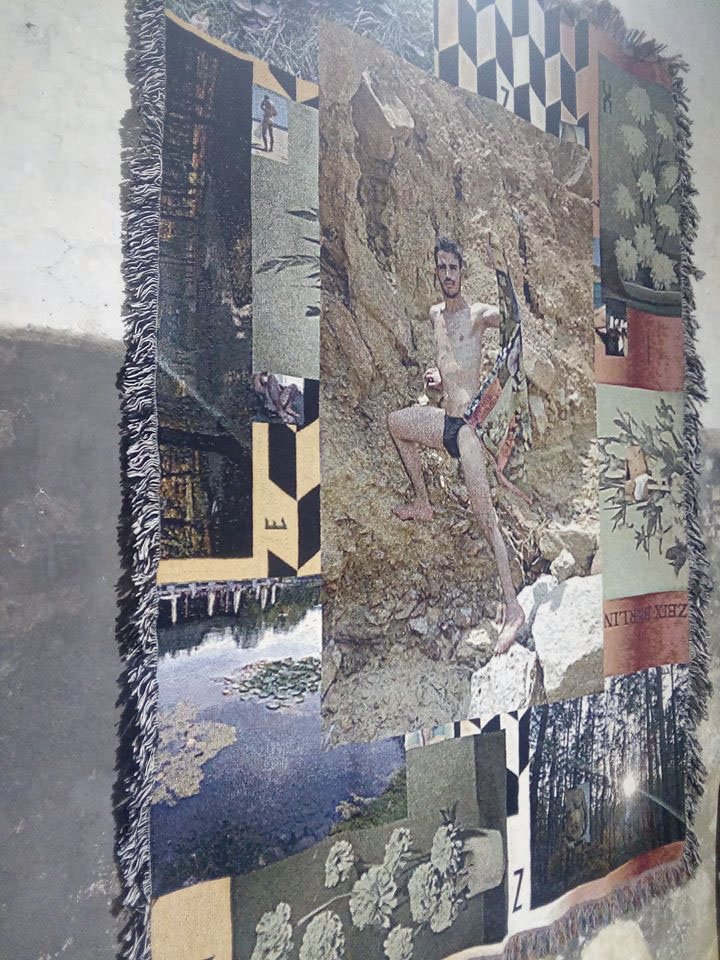conducted by Camilla Boemio
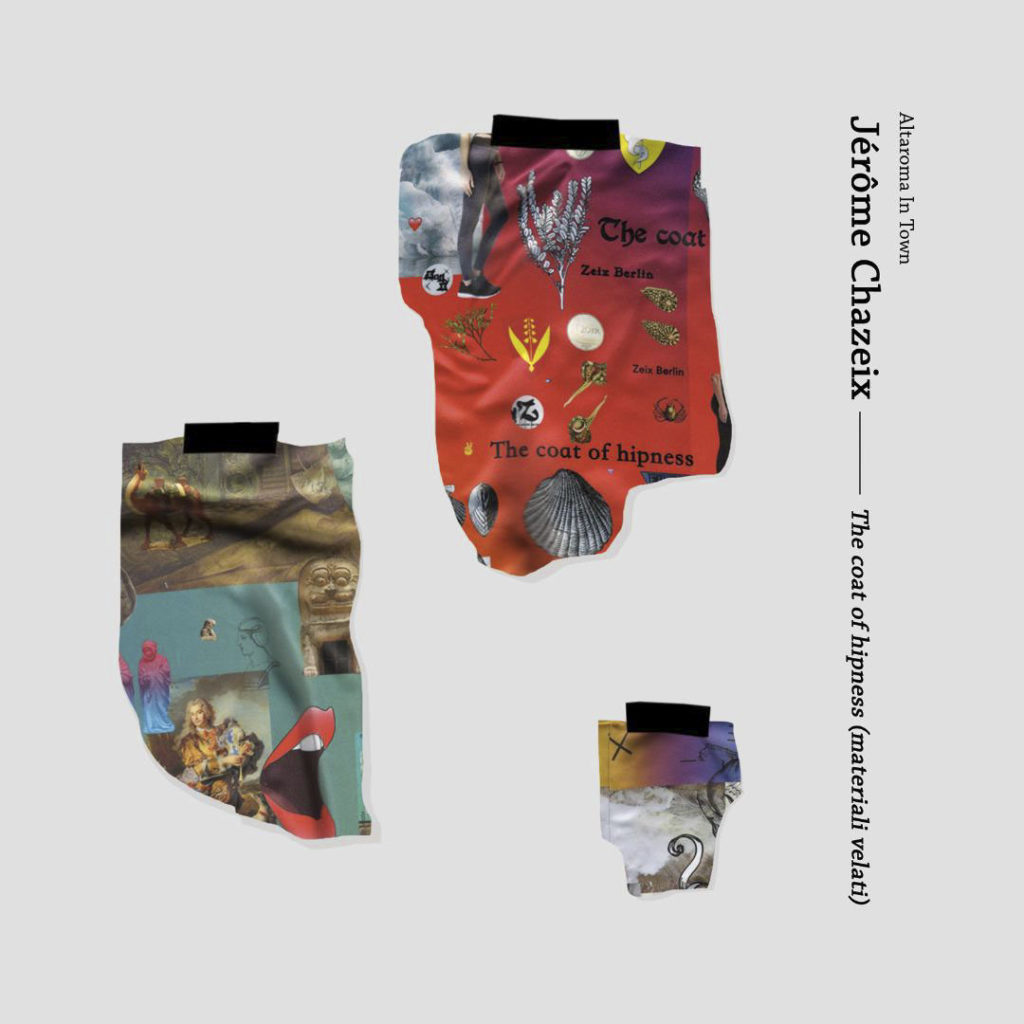
Your multidisciplinary stratification, which includes elaborate installations and performances into site-specific venues, the overall structure is characterized by a kaleidoscopic atlas vocabulary in which stagings with music, costumes, and participation (a stronger language game). Can you introduce us to the Zeix world?
I am not interested in a single piece of art, I mean I have difficulties to see an access to something more than decorative throughs an only two-dimensional work for example ; art can be develop in the presentation of a whole project, that is able to deliver a whole vision; I consider my works as ‘Total works of Art’ (Gesamtkunstwerke1), attempting to create hybrid parallel worlds through a series of immersive multimedia experiences that I refer to as ‘The Total Object’, theatrically rendered in their truest form, these works act as a stage for public integration.
The association of different media and their correlation is the central focus of my installations bringing together drawing, costume, video, and objects. These elements are prioritized and integrated within, culminating in a complex scenery, disorientating, and even hypnotizing the viewer to a state of otherness,
Even the world „installation“ isn´t reflecting enough on my approach. I prefer to use „staging“. Like graphic contamination, the staging envelops all surfaces of the space and guides you to enter a new consciousness.
Video with music and/ or performances are always included in my work: they bring life into the exhibition. I attend to create pulsating cosmos.
For almost 20 years, I had staged a fictive label Zeix Berlin in the form of a boutique-like installation, presenting products reappropriating the language of the fashion (such as Hermès clothes and Dior necklaces, among others). After my name, like a provocative slogan, Zeix is a vividly colored or wonderful universe, that is also disturbing and already carrying in itself traces of intoxication. Zeix makes elements of our consumer society its own, in the process thematizing trends, mass media, fashion, pop culture, etc.
I believe there is a need today more than ever for sharing and empathy rites, which acquire even more power after experiencing the pandemic, during the protests for the death of George Floyd and in the month of the pride. Which is your opinion?
Definitely. I love those terms (my future show in September is named „Youth rites“). I see the experience of art as a big rite, a confrontation with an entire world, a vision that share other pictures that those we know or another approach, other centers of interest, other point views. Queer or people of color points of view for example reflect the diversity of the world and they are key points to understand it. Those decentralized points of view have never been so important in a society where the internet should diffuse all information and all sources.
How has your history/life influenced the way you produce art?
I guess one of my first influences was the opera. As I child, I play fagot in a school of music. The music universe in its immersive theatrical form as in the opera was a fascination.
Also, the old master painting (Uccello, Signorelli, Crivelli, di Cosimo), especially in its painting cycles and series, or obsessional repeated motives had a strong influence on me. It was the first focus of my studies.
As a teenager in the Nineties, I have to say I am a kid of the techno music and the rave movement. Those experiences of catharsis, symbiosis, and the effects of the rhythms have shaped my conception of art.
My professor in the school of art was Katharina Grosse, she helps me to understand the space as the new canvas. Also, the writing of my Ph.D. on total pieces of art (with among others Vienna actionism, Matthew Barney, Cindy Shermann, Journiac, and Sorbelli) help me to define my vision of art.
Participatory art has its origins in the futurist and dada performances of the early twentieth century, which were designed to provoke, scandalize, and agitate the public. The French film-maker and writer Guy Debord (one of my favorite), also promoted a form of participatory art in that he wished to eliminate the spectator’s position by devising industrial paintings: paintings created en masse. How is changing the practice? And how you use it to realize total art?
As an artist working in a solo position in society, I love the fact to encounter the other, enthusiastic people to work with me for a performance or a video, and by the way, communicate with them about the role of art.
Performance and participatory art are definitely a risk; I see them as an essence of life. In my work, it is about to get the elements of the installation been activated. Like in a rite they all belonging together, to the performance, and the installation presents the traces of what happened, the artifacts of something bigger.
Does fashion need art or art that need fashion? Blurring the Boundaries between Art and Fashion?
I hope to blur yes. But I think my creation belongs to the art word. My works deal with questions of fashion, propose an ironic vision of fashion, a mix of admiration/ reappropriation of its codes, and also consume society criticism.
Fashion is so fascinating. It is quite like a visual opera, a form of sacralization modus apparatus. A fashion show is for this reason so incredible: there is a repeating form of code, a ceremony; the clothing does not really matter, but the shape of the comings and goings is a form of sacralization (similar to the live representations of the passion of the Christ in the middle age).
From 1998 to 2007 I realized the performances „Défilement de mode“ 0.1 to 0.4. and put that form of sacralization into a stage.
In 1998, I founded FIJM, the International Federation for Men’s Skirts. I staged this pseudo label in 1998 during performances which took up the form of a fashion show. So I use public fashion shows to advocate live that men should wear skirts: „Défilement de mode 0.3“ (2002) for example took place in a shopping mall on the outskirts of Dresden. Fired up by electronic rhythms and alcohol the amateurs actors gradually seized the opportunity to “pose” before the camera and passers-by.
You are able to structure an aesthetical critical inquiry into issues of identity of gender, the conflicts, and the construction of gender. What is today an aggressive use of fetishistic elements as corsets and garter belts in fashion at times?
Issues of identity and of gender first went through clothing. My absolute first work, „En 1998, je décidai de porter toutes les jupes de ma mère” (In 1998 I resolved to wear all my mother’s skirts) take it as the central topic. I held an isolated rave in a petty-bourgeois interior and used my parent’s apartment as the stage for a solo performance. In the course of three days, I wore all my mother’s dresses and skirts and in these alternating clothes danced alone before the camera to the rhythm of electronic music. The wearing of my mother’s wardrobe questions the relationship between mother and son, the value of the dress (originally worn by men), masculinity, and femininity as a construction in the sense of Foucault, as society lockings up.
By resorting to the fetish character of fashion I try to structure a critical inquiry into issues of identity of gender, into the construction of gender.
The digital transformation and the consequences of the flood of media imagery are one of my focal points in recent years. We are witnessing a complete mix of references in our visual culture through the internet flow. I think there is a new fetishization of the images. For example, my work LOVEANTIC (2019), deals with images, symbols, and codes from the ancient Greeks. The artwork is dedicated to our experience with access to the images. I am concern with the images of antiquity, their conversion into aspects of our daily lives, and as well as with the shift of their aesthetics into other areas (e.g. cultural clichés, beauty, fetish, homoerotic, ecstasy, athletic body, fashion, techno, etc.). Through hurling, puzzling, and appropriating, teasing off set pieces from different contexts, and processes them in new contexts, I create a popistic mix that is highly addictive and combinatorial, and questions our approach to visual culture in our era of digital images.
I’m completely enthusiastic about your installation realized for AltaRoma2020, at Label201. Give me a memory of this very good moment, before the global pandemic.
Thank you. The project in Rome THE COAT OF HIPNESS (MATERIALI VETATI) refers to the first presentation THE COAT OF HIPNESS succeeded in 2017 in USF Visningsrom Bergen (Norway).
I created prints for a fictive fashion collection of leggings, waist tops, bomber jackets, and caps, reflecting current hipster trends. The flood of images that appear on the clothing addresses the disappearing value of the individual image, driven by the Internet stream. At the opening, the performers also carried coats of arms that I designed. As a driving rhythm arose in the atmospheric music, the performers set themselves in motion and completed the installation with their performance, hanging the coats of arms on the wall.
The performance, which forms part of the whole concept, was executed in the installation and permanently presented as a video.
You have to imagine, on the opening 3 to 6 performers are lying on the floor waiting for the proper beginning of the performance (approximately after 1 hour); they are wearing a coat that collects almost all the textiles’ works of the show in layers. After approximately one hour the music is braking and get the tempo. The performers begin to move and with gestures and slow motions (selfies attitudes) they are ending the installation by hanging all the textiles elements. At the end of the performance, the documentation of the performance is presented as a loop in the installation. Before the opening, I had produced with the performers a new video presenting them and the clothes, like a fashion spot. It was also part of the all-over installation.
In Rome, new textiles works have been added to the first ensemble of work (the coat of arms) in particular tapestries and the scare prints on silk of the brand Zeix Berlin.
The particularity of the space Label201, with its materiality on the walls, was like a cocoon, an already existing wallpaper that I was playing with. MATERIALI VETATI refers to this historical layers that Rome is typical for. Different eras coexisting and you can find it in the motive of the new clothes (as well as in the whole city).
Conducted by Camilla Boemio
